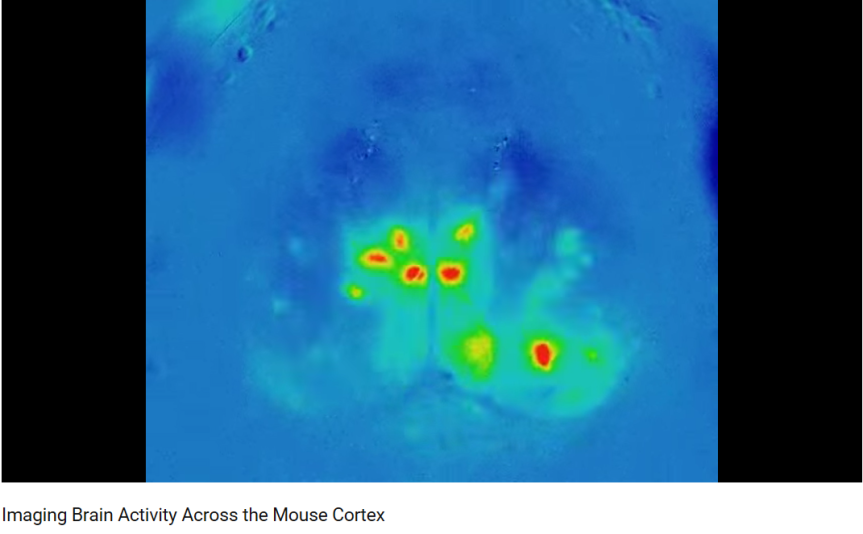Zebrafish, rodents, and nonhuman primates have been instrumental in the technological developments emanating from the BRAIN Initiative, and will be critical in testing applications of new technologies for use in humans, say Directors of two NIH institutes
Leaders from the National Institutes of Health (NIH) this past Monday presented exciting updates on the Brain Research through Advancing Innovative Neurotechnologies® (BRAIN) Initiative in a congressional briefing sponsored by the American Brain Coalition, the American Academy of Neurology, and the Society for Neuroscience in cooperation with the Congressional Neuroscience Caucus. The briefing, titled, “Launching into the Next Phase of the NIH BRAIN Initiative,” featured Dr. Joshua A. Gordon, Director of the National Institute of Mental Health (NIMH), and Dr. Walter J. Koroshetz, Director of the National Institute of Neurological Disorders and Stroke (NINDS). They gave an engaging presentation to inform attendees about the most recent discoveries resulting from the BRAIN Initiative, and how these discoveries are meeting the seven high priority areas of the Initiative. Throughout the hour-long presentation, both Directors repeatedly underscored the need for animal research in the Initiative – and the discoveries and applications emanating from animal research.
The BRAIN Initiative was announced by the Obama administration in 2013 with the goal of “accelerating the development and applications of new technologies that will enable researchers to produce dynamic pictures of the brain” that will inform about brain functioning, behavior, and eventually, the development of treatments for brain disorders. Neuropsychiatric disorders in particular are a leading source of disease burden and cost in the U.S.
Gordon and Koroshetz wasted no time in highlighting the valuable role of animal models in the discoveries and applications produced by the BRAIN Initiative. Below are just some of the many examples of notable achievements made possible by animal models shared during the briefing:
Mouse models were instrumental in developing the CLARITY technique for visualizing the structure of individual neurons by making brain tissue transparent. This technique is now being used by BRAIN Initiative-funded researchers to generate circuit diagrams in the brain that can show resolution from the whole brain down to the synapse level. Currently it can only be used in post-mortem human brains, but the methodology lays the foundation for the development of the technique in living people.

- Studies in mice have also been crucial for leveraging new technologies to visualize brain function noninvasively, from the individual neuron level all the way up to whole functional brain networks. Koroshetz noted that scientists rely on studies in animals for mapping brain circuits to better understand the human brain. By seeing circuits in action, scientists can better understand brain function to improve health.

YouTube video showing functional magnetic resonance imaging (fMRI) of genetically-encoded markers of brain activity non-invasively (through the skull). https://www.youtube.com/watch?v=8JhA4ZJ4ZPQ - The Brain Initiative Cell Census Network (BICCN), launched in October 2017, will study mouse, monkey and human brains to develop a comprehensive reference of the diverse types of brain cells. Because so little is known about what the different types of brain cells are and what they do, this research is foundational in understanding brain illness. Koroshetz stated that getting “results from the mouse is like getting into orbit but we want to get to the moon.” Mapping the human brain is needed before we can understand and treat brain disorders.
- Researchers at the University of Michigan are developing dense arrays of 8 micron carbon-fiber electrodes, which are stiff enough to insert into the brain yet small enough to avoid damage. By studying zebrafish and rodents, researchers are developing this technology to record the electrical activity of neurons and for voltammetric measurements of neurotransmitters like dopamine.

- Animal models, including mice and nonhuman primates, were necessary for testing the efficacy and safety of treatments like deep brain stimulation (DBS). A BRAIN Initiative grant funded a clinical trial at the Cleveland Clinic that resulted in the nation’s first DBS surgery on a stroke patient. Koroshetz also emphasized how important these animals will be in developing the eventual next-generation DBS devices for the treatment of other brain disorders.
- To date, 345 BRAIN Initiative grants have been awarded, only 80 of which involve human subjects. The remainder have funded animal models and other types of projects including work by engineers, physicists, and mathematicians.
During the Q & A session that followed the presentation, I asked Gordon and Koroshetz how they might respond to people who might claim that federally-funded animal research is a waste of taxpayer money, particularly as it pertains to the BRAIN Initiative. Gordon replied, “Certainly, we need to understand the human brain to understand and treat human disorders, but there is no way to get there technologically without studying animals.” To understand the brain in total, he said, the only way is to study animals. Importantly, he emphasized the need for relying on animals only when necessary, and for treating them with great care and respect. “To advance the trajectory of knowledge, of science, and of care, we need to use each animal as appropriate,” Gordon said. Koroshetz offered another perspective: “Certain systems are so evolutionarily conserved that we can learn a huge amount by studying animals – about pain circuits, breathing circuits, and more.” Ultimately, both agreed, the use of animals in the BRAIN Initiative depends on the question one is asking, but without them this project cannot succeed.
This briefing was one in a series of neuroscience briefings that seek to promote a better understanding brain development and function. Watch this space for updates on future briefings.
~Amanda M. Dettmer
References:
Chung, K., Wallace, J., Kim, S.-Y., Kalyanasundaram, S., Andalman, A. S., Davidson, T. J., … Deisseroth, K. (2013). Structural and molecular interrogation of intact biological systems. Nature, 497(7449), 332–337. http://doi.org/10.1038/nature12107
Jorgenson, L. A., Newsome, W. T., Anderson, D. J., Bargmann, C. I., Brown, E. N., Deisseroth, K., … & Marder, E. (2015). The BRAIN Initiative: developing technology to catalyse neuroscience discovery. Phil. Trans. R. Soc. B, 370(1668), 20140164.
